
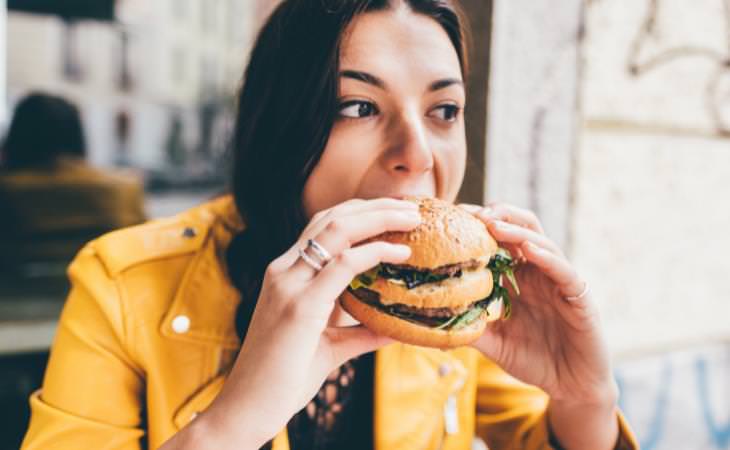
As you know, we eat not only with our mouth but also with our eyes and nose. The food has to look appealing and smell enticing. Our sense of taste is greatly affected by the sense of smell. But did you know we also eat with our ears? Yes, the texture of food is determined by both the sound it makes and the sensory receptors in our mouths. That's why pop rocks are such fun - they stimulate (almost) all the senses!
The sensitivity of children to texture is the product of experience and expectation. They're still collecting data about the world. They can expect the food to be crunchy when it is creamy instead, and that will be unsettling.

Why do we globally like crunchy food then? That's simple: the crisp texture is associated with freshness, contributing to our overall satisfaction.
But there's more to it. The sounds you hear inside your head and the force you put in your jaw, send stimulating signals to the brain. It is a parade of electricity inside your skull and it can even help in the development of children's brains, once they grow the teeth for it.
But wait, there's even more. You know how the little ones love chewing and biting their toys. This habit isn't exclusive to toddlers. Chewing is one of the few sensory pleasures that last throughout our lives. In other words, we enjoy chewing as much as the children do. It's not without reason that living on a diet of juices can be so depressing for the elderly.
The chewing action increases blood and oxygen flow to the brain, which in turn increases brain function. This is one of the many reasons we feel and think sharper after a light meal. A Swedish study from 2012 suggests that elderly people who could chew hard foods were less prone to cognitive impairment!
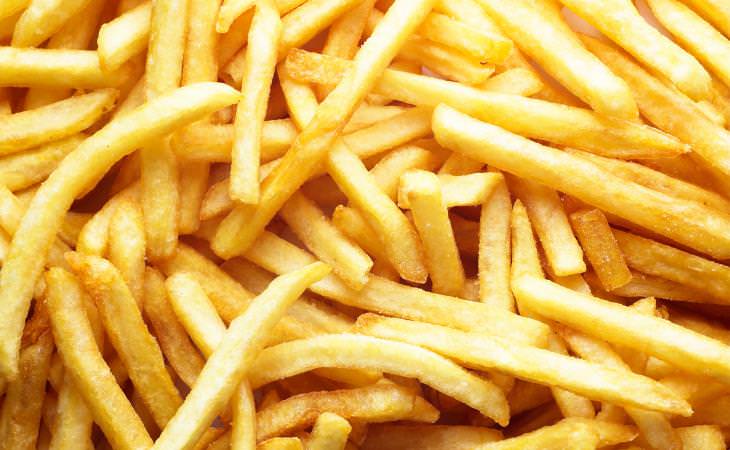
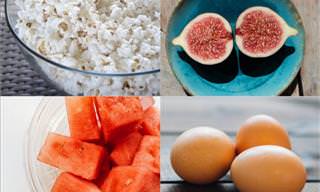
8 Foods That Make for the Most Filling Low-Calorie Snacks
Do you want to control your weight? Our list of top 8 most filling foods ranks the ones with the lowest calories!
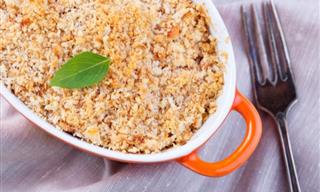
2 Ways to Use Granola Not in Breakfast
Here are 2 ways to use granola and oats beyond breakfast.
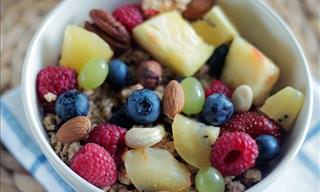
8 Reasons Why You Should NOT Be Skipping Breakfast!
"Breakfast is the most important meal of the day" - you've heard it before, but reading the following informative benefits, you won't want to miss another breakfast again.
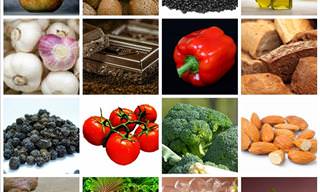
Pair These Super Foods For Huge Health Benefits
Pairing certain foods together can hugely increase the health benefits they provide for you!

Read These Facts and Think Twice About Eating Fast Food...
It's common knowledge that fast food restaurants do some awful things to maximize profits, but do you know how bad things really are? Read on to find out.

What to Eat in a Day to Reduce Your Risk of Cancer
So, what would a day of healthy eating (breakfast, lunch, dinner, snacks and drinks) look like if someone were to follow a cancer defense diet?
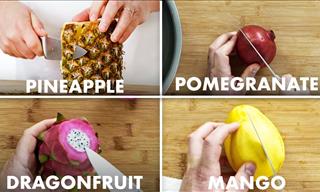 23:37
23:37
Tutorial: How to Slice EVERY Type of Fruit!
Learn how to slice over 30 different fruit through this easy and fun tutorial video.
 18:31
18:31
These 27 Great Bathroom Hacks Will Make Your Life Easier
Looking for some ingenious bathroom and shower hacks to make your life a lot easier? If so, you’ve certainly come to the right place!

This is Why Getting Distracted Can Be Good For You
People think that getting distracted is a bad thing, but recent studies have actually disproved this. Learn more here!

12 Helpful Uses for Eucalyptus Oil You've Got to Try
With so many health benefits, which you will discover in the article ahead, you'll find Eucalyptus Oil has many great uses.
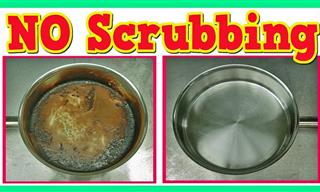 3:15
3:15
Cleaning Tips: The Best Ways to Save Your Burnt Pot
Cleaning a scorched pot without scrubbing is possible! Here are some tips to make it look as good as new with ease.
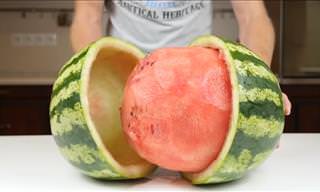 3:55
3:55
9 Terrific Methods to Cut Up a Watermelon
What is the best way to chop a watermelon? Here are 9 creative ways.

10 Best Plants to Plant During the Month of October
Here are ten of the best plants to get in the ground this October.

Get Rid of These Pet Stains With This Neat Guide
There may be times when our pets have accidents on our favorite carpets, or on the floor. Learn how to remove stains, both old and new, and use home remedies to maintain a clean home.

These Tips Will Help You Keep Your Car In Order
These hacks will help you get shinier headlights, organize your interior, and provide a nifty hack to help you remove a small car dent and lots more.

How to Make Wooden Furniture Look as Good as New!
Do you have a piece of wooden furniture that has been stained? This is how you can restore it to its former glory.

14 Psychological Tricks You Have to Try Today!
How about getting people to agree with you? Kid won't eat their greens? These 14 psychological tricks will get people to do what you want.

9 Uses for Your Freezer Besides Keeping Food Frozen
These 10 clever freezer hacks will save you precious time and allow you to make the most efficient use of it.

Want to Know How to Read People's Minds? Read This!
Learn to read people's minds, by keeping an eye out for these body language signs.

10 Tips for Seniors to Use Tech Like a Pro
Seniors, enhance your tech skills with these tips.

Keep Insects Away With a Few All-Natural Bug Repellents
From bed bugs to spiders, these quick homemade bug repellents made from natural ingredients will help you keep them away.

If You Do These 6 Things, Burglars Won’t Target Your Car
Tips to effectively protect your vehicle from burglary and theft

DIY Body Oils: Nourish Skin with These 6 EASY Recipes
Nourish your skin with these amazing homemade body oils.

Got a Pair of Suede Shoes? This Is How to Care For Them
Care for suede shoes easily with these essential tips.

How You Could Be Bringing Bed Bugs Into Your Home
Even if you don’t have a bed bug problem right now, you should be aware of the ways bed bugs can get in your home.
 8:13
8:13
5 Best Salts to Cook With... and One to Avoid
Here's a guide to help understand which salts to buy, how to use them, and which ones to avoid.

20 Things You Can Do When You're Feeling Anxious
Stress can poison our daily life, but there are some small ways reduce it you can easily try.

Want to Buy the Freshest Products? Here’s how!
There are basic food products that we consume regularly, so its super important to know how to check their quality. These next tips will help you do just that.
 10:27
10:27
The Easiest Way to Get Free Blueberry Plants
With a little patience and the right method, you can harvest blueberries at home!

Learn the Ultimate Way to Remove Mildew Smell From Towels
If you ever forget to remove your towels from the washing machine once the cycle had finished, then you're going to need this simple guide.

The Secret to a Happy Marriage is Knowing These Tips!
Whether you're a newlywed or have been married for years, here are ten awesome marriage tips that will help you and your loved one enjoy wedded bliss!

14 Useful Charts and Guides You’ll Want to Save!
We prepared a list of 14 visual guides and charts that will come in handy at home, outdoors, and even when you’re searching for something online!
 4:34
4:34
Discover the Ideal Morning Routine to Activate Your Brain...
If you struggle to wake yourself up every morning, then this video might just have the perfect solution for you.

9 Essential Oil Sprays that’ll Naturally Upgrade Your Life
Regardless of whether you want to clean your house, get better sleep or keep your makeup in place, essential oils can be used to provide many of the solutions you’re looking for. You can solve a number of problems using these 9 essential oil sprays.

Making a Porcelain Sink Sparkle is As Easy As 1,2,3 and 4!
Porcelain sinks are beautiful, but they can be prone to staining. Luckily, there's a secret product out there that's perfect for making it sparkle once again.

11 Extension Cord Mistakes That Could Put You in Danger
Knowing how to handle extension cords correctly can help prevent fires, electrical shocks, and other risks.

People Really Have No Idea What These English Words Mean!
A lot of people think they know how to use English words correctly, but they really don't! Here are 21 most misused words in the English language
 4:40
4:40
This Is What Makes Duct Tape So Strong! Impressive
This is why duct tape is so strong!

Remove Marks from Your Walls By Following These Tips
Here's how you can clean marks and stains on your walls.

7 Handy Bathroom Hacks That Will Make Your Life Easier
Here are some handy bathroom life hacks that will help you keep it clean and well-organized conveniently.

11 Things You Should NEVER Dump Into the Kitchen Sink
Even a garbage disposal won’t be able to handle these 11 things, so make sure to toss them directly into the trash instead of the kitchen sink

Ink Stain Removal Made Easy With 9 Ultimate Home Methods
Don't throw out you ink-stained clothing, instead, try one of these 9 at-home methods of ink removal to revive your garments

How to Polish 12 Old Items So They Look as Good as New
If you want to clean and restore the luster to objects, furniture, and items throughout your home, just follow these 12 simple tips...
 8:30
8:30
A Full Guide to Cleaning Your Car's Interior
If you want a car that looks incredible on the inside, watch this video and follow these steps.

Versatile Ingredients You Should Always Have in a Kitchen
The 15 foods we feature on this list are all serious multitaskers, so it's always good to stock up on these!

Relieve and Restore an Itchy or Dry Scalp with These Masks
3 simple, at-home hair masks that will nourish your scalp and relieve the itching and flaking brought about by a dry or flaky scalp
 11:31
11:31
Lessons in Etiquette: 21 Rules You Can’t Ignore
Watch etiquette expert William Hanson share some important tips that all of us must know.
To enable your Ad-Free Subscription, please fill the fields below
Your subscription was successful, now you can enjoy an ad-free experience!! Note: To make sure you get no ads, please make sure to log in to your account. If you are logged in already, then refresh the page. The subscription can be cancelled at any time.


